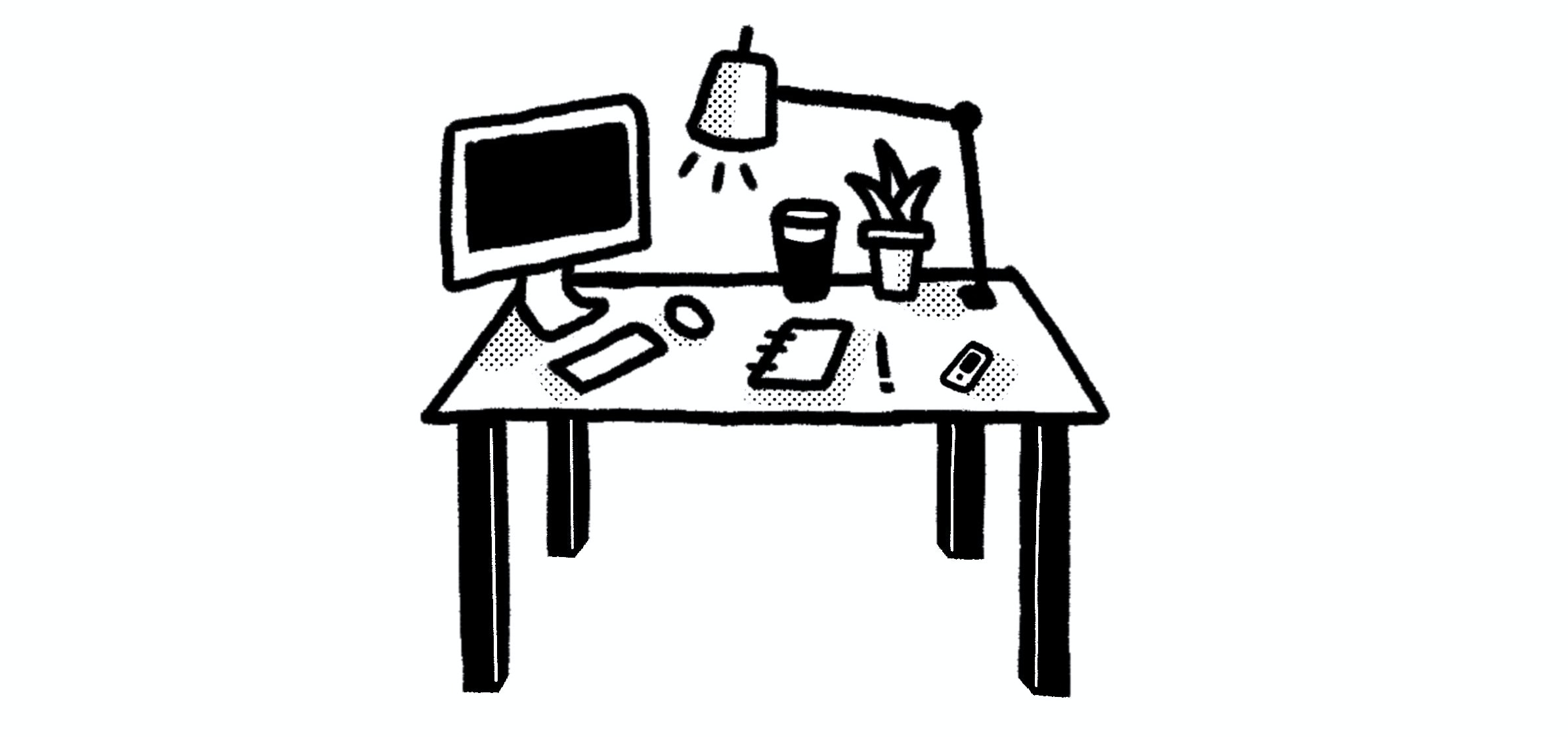Remote, but not alone
- Publish Date
- Authors
- Justin Searls
You already know what this post is and what prompted me to write it. But if you know me, you also know I wouldn’t be sharing this unless I felt there were things worth saying about remote work that weren’t being said elsewhere.
Test Double has been completely remote since we started in 2011. And while we’re proud to have helped dozens of companies improve how their teams collaborate over distance, we’ve never shied away from the fact that remote makes a lot of things really hard.
Sitting at home with a laptop: yes, sure, easy. And the avalanche of takes flooding our timelines about keeping a well-rounded routine, maintaining clear work-life boundaries, and continuing to wear clothes: yes, also very good advice. But there are a myriad of other subtle, thorny issues that impact people’s ability to do their best work remotely—and I’d be willing to bet none of them made the cut when your company’s HR department published a mandatory work-from-home policy earlier this month.
So here’s some free advice you might not have heard already. Some are seemingly-obvious things that nevertheless took 12 years of remote work to sink in for me. Almost all of them are things I still personally struggle with.

As a remote human
-
Assume good intent. This is an unprecedented event, and it’s going to impact each of us differently. As a result, consider adopting the principle of charity as you communicate with others by assuming they’re doing the best they can. If you tend to skim blog posts quickly, I hope your eyes caught this bold text, because this is likely the most important thing any of us can do to be a better teammate to others
-
Be accommodating. When we imagine others working from home, it’s natural to project assumptions about your home onto them, but it’s important to empathize with the distinct challenges your colleagues may be facing. Perhaps their home life is too distracting to focus for long periods of time. Maybe their (similarly disrupted) cohabitants require significant time and attention. And something as simple as not having access to reliable broadband Internet could severely limit what kinds of work they can be expected to do
-
Don’t skimp on the ✨. I learned from this talk by Keavy that when communication is mostly mediated in writing, neutral text is often perceived as negative, while positive text is perceived as merely neutral. What does this have to do with being remote? Well, as more of a team’s interactions move online, any natural feelings of rapport and validation that would otherwise be latently generated in a friendly office environment need to come from somewhere else. I recommend more explicitly communicating the emotional subtext behind what you’re saying, showing others appreciation more often, and sprinkling in emoji when your intended tone might otherwise be misread 💫
-
Pick up the phone. Speaking of text, it’s a really low-bandwidth communication medium, and that means misunderstandings are inevitable. Even with Todd, who I’ve been working with remotely for a decade, we still miscommunicate over e-mail and chat regularly. The skill we’ve developed, though, is to quickly recognize these misunderstandings as they occur and immediately switch to a higher-bandwidth medium like an audio or video call before an innocent miscommunication has a chance to escalate into a hurtful conflict
As a remote employee
-
80% of success is showing up. But when everyone’s at home, nobody can tell whether you’ve shown up or not. In an office, you might be able to earn points with your manager by coming in early, looking busy, and working late. But remotely, the time you devote to work—your input—is no longer self-evident; that puts the onus on you to proactively communicate your activities and achievements—your output. If nothing else, consider a daily (seated, text-based) stand-up to update your closest colleagues on your day’s priorities, to celebrate your successes, and to identify any help you need. Asking yourself, “what do I have to show for my work today?” can be utterly terrifying if you’re not used to it, but I’ve seen this mindset-shift have a transformative impact on many people’s careers
-
Embrace your autonomy. Congratulations, you are the branch manager of your company’s newest office! Did your boss used to hover over your shoulder? Were you micro-managed over bathroom breaks? No more! If you feel undue pressure about how you organize your day or approach your work, then being alone in a room may help you identify which of your work stressors were actually self-imposed. Unwinding the coping mechanisms we develop to deal with work anxiety is no small feat, but over the years I’ve gradually reclaimed a sense of agency and designed an increasingly weird existence for myself. Taking ownership of your schedule and environment may foster a healthy detachment from your job, allowing you to think more freely and solve problems more creatively
-
Manage your attention. When I’m working in an office, I tend to get so absorbed in the people and activities around me that the day flies by. I might check email once or twice, but in an office I generally don’t get sucked into text messages, social media, and so forth. Working from home is another story. While I’ve always been diligent about avoiding fun from 9-to-5, my thirst for real-time validation from others is so intense that when I’m home alone, I often find myself manically tabbing between Slack, Twitter, and email (and getting nothing done as a result). The only thing that works for me is to block or meter my access to potential distractions. Cal Newport’s two books helped a lot in this regard
-
Collaborate proactively. When colocated, it might feel natural to ask for help, pair up on a problem, or check to see how others are doing. Remote teams lack the passive ability to read a room, however. If someone is stuck on a problem in isolation, the more time passes, the more shame they’ll feel about asking for help. On a remote team, it’s everyone’s responsibility to ask for the help they need and routinely offer what help they can give one another. Meanwhile, if you’re used to collaborating closely (e.g. pair-programming all day), you’ll need to make adjustments, too. For example, network latency might make long screen sharing sessions irritating; perhaps you and your colleagues can find a new rhythm for working together—keep an open mind and experiment! (Need ideas? We shared some suggestions in Joe Kutner’s Remote Pairing book)
As a remote manager
-
Mourn the office, then move on. Since managers are often responsible for maintaining (and paying for!) physical office spaces, they may struggle most with the loss of camaraderie and spontaneous interaction an office environment can enable. But without an office, most people will still want a sense of connectedness at work, and they’ll look to managers to provide it. You may see your role as interior office designer morph into a sort of digital camp counselor, encouraging both ad hoc and systematic social interactions among the people you lead. How do you replace serendipitous workplace conversations? Here’s just one example: at Test Double we have “coffee time”, an automated script that pairs off everyone in the company at random each week to have a quick chat with someone they might not otherwise have reason to talk to ☕️
-
Trust that people are working. Not being able to look around the office and see people looking busy means you’ll have markedly less awareness of and control over who’s doing what and when. We’ve seen managers try to restore that sense of control by treating tools like Slack as time & attendance systems—expecting employees to respond to direct messages immediately and for their status bubbles to glow green all day long. Naturally, this results in employees feeling surveilled and chained to their desks—instilling the sort of fear that absolutely kills most peoples’ cognition and productivity. Complicating matters, many companies previously doled out limited “work from home days” as a fringe benefit, inadvertently creating the impression that remote work is not “real work”. The only strategy that works is to trust people: let go of any impulse to control others, believe that people are working, and grant everyone autonomy over how they do their work
-
Spot-check your tools. Suppose your team uses Trello. You might assume this means the team plans its work in Trello, and is therefore already Remote-Friendly™. What you might find after a few weeks, however, is that your Trello cards are woefully insufficient as specifications and people are struggling to get things done as a result. Perhaps the team actually planned its work via a series of structured and unstructured conversations in the office and Trello was used more as a progress tracker than a work planner. If so, the team will need some other way to reach a shared understanding of the work (and a team-wide video call may not cut it). You can get ahead of problems like this by taking the initiative to audit the tools your team uses and identify any process gaps that might be created by a reduction in passive communication
-
Lower your expectations. Vanishingly few companies are effective at assessing people’s job performance objectively, and as a result colocated teams tend to over-index on input measures (like hours worked) and so are relatively ill-equipped to evaluate a remote colleague’s work. In lieu of input metrics, it might be tempting to hurriedly start measuring individual output (lines of code! Issues opened! Issues closed!), but trust me: you’re not going to dream up good ones overnight. Distilling how a team creates business value into observable criteria and then implementing a system of individual expectations & accountability can take years to get right. If your company isn’t yet prepared to assess the performance of a remote workforce, that’s okay: but it’s 💯 on management to address, not individual contributors. So for now, if you worry someone is under-performing, the humane thing to do is to cut them some slack and use it as a learning opportunity by offering as much direct support as you can
You’ve got this
These are just a few of the ways I’ve seen individuals and teams struggle as they transition to remote work, but I hope it’s offered you some useful food for thought. If you’re looking for more and you haven’t yet seen Marla’s talk on going remote, you really should!
These are scary and uncertain times, but know that you’re not alone! If you could use some reassurance, I have no doubt that any of the Test Double Agents would be delighted to share how they learned to bring their best self to remote work. And if you send me an email with a question or concern about any of this, I promise to write you a reply with the best help that I can offer.
Oh yeah, and remember to wear clothes.
Justin Searls
- Status
- Double Agent
- Code Name
- Agent 002
- Location
- Orlando, FL
